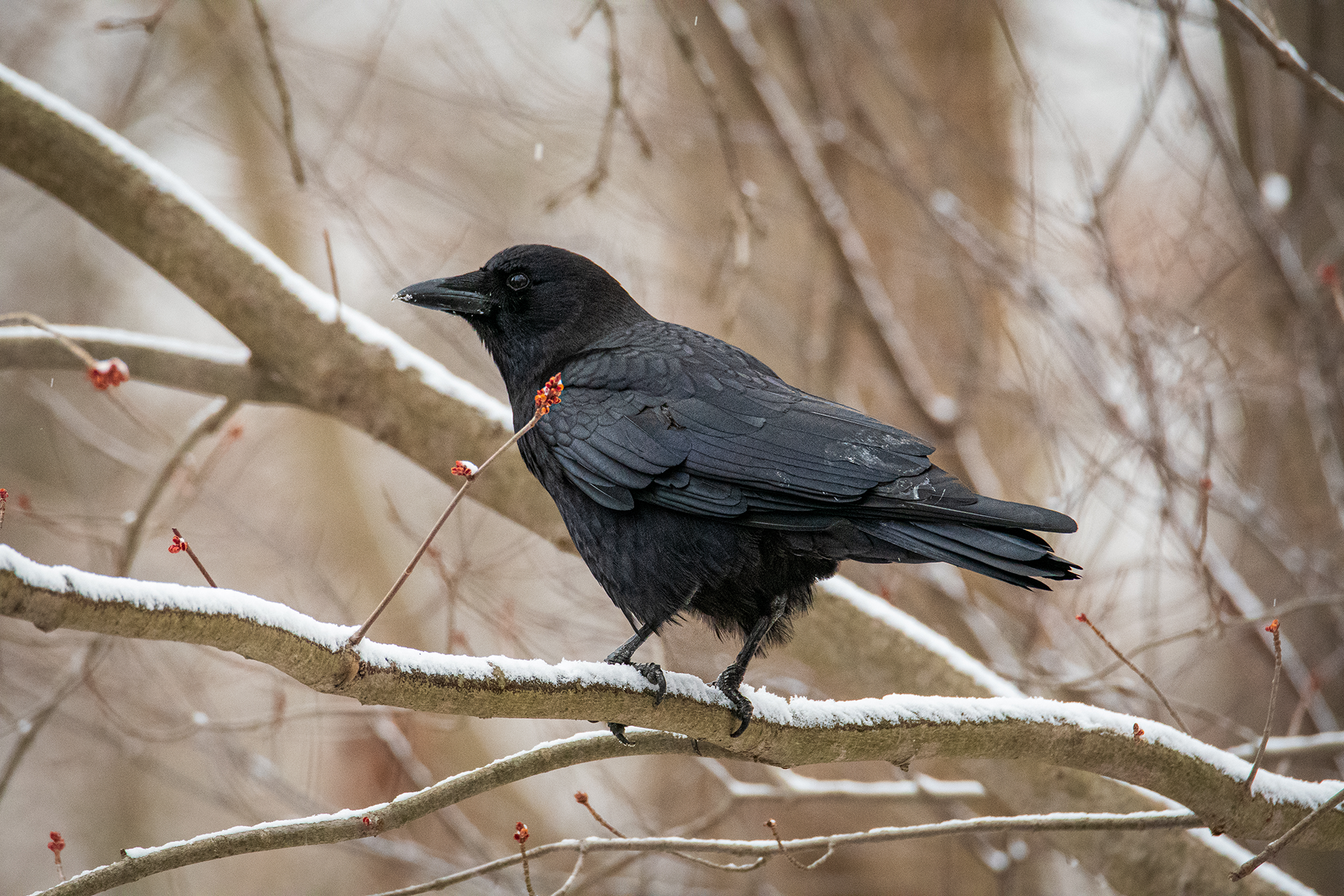Over the years I have learned to pay attention to crows. A group of crows — also known as a “murder” — making a persistent racket often points the way to a hawk or owl that they are mobbing, a common behavior in which smaller birds gang up on predators. A few weeks ago a chorus of caws on my block pointed the way to a red-tailed hawk a murder was trying to move along from the rooftop of a house across the street.
Crows have both a fascinating history and complex ecological relationships to ourselves and other creatures in our urban habitat. They’re also just plain beautiful: black and glossy, they fly over the city with deep, liquid wingbeats.
In Euro-American culture, crows have a bad rap: they’re seen as carrion eaters and harbingers of bad news (not to mention bearing associations with racism, as in the last name of “Jim Crow”). If a bluebird on a sunny day sparks optimism, a crow cawing on a dreary winter day inspires the opposite sentiment.
Barbara Bluejay, chief of culture, tribal secretary and tribal counselor of the Lenape Nation of Pennsylvania, tells me by phone that the Euro-American view of the crow — and other wild animals with which we share cities in Lenapehoking (the Lenape name for our region) — isn’t universal.

“The crow is significant to us because of the prophecy of the four crows,” Bluejay says. In that prophecy the first crow flew in harmony with the creator, the second attempted to clean the world but became sick in the process, the third hid when he saw that the second crow had died, and the fourth again flew in harmony with the creator. The Lenape see the prophecy as an allegory for their own history, starting before European colonization, then being driven off their land and into hiding, and ultimately assuming their role as stewards of the land again.
Many other urban critters you might spot on a walk around Philadelphia have cultural significance for the Lenape. “The eagle is sacred to us because the eagle carries our prayers up to the creator,” Bluejay says.
We believe we are related to everything.”
— Barbara Bluejay, chief of culture of the Lenape Nation of Pennsylvania
Bluejay explains that the turtle plays a major role in the Lenape creation story. Dry land was built up on the back of a floating turtle. The muskrat, an unassuming rodent that lives in burrows or small mounds of vegetation along our waterways, is the hero of that story, diving deep underwater to retrieve mud to be layered on top of the turtle’s shell.
Other familiar urban species played critical material roles in the daily life of the Lenape before colonization. The shad and sturgeon that migrate up the Delaware River in the spring were critical foods after the lean winter. The white-tailed deer that teem in our parks and forests provided meat, hides for clothing and materials for myriad tools like hoes made from their shoulder blades. Not surprisingly, deer play an important role in Lenape seasonal festivals and spiritual life.
Today, of course, the Lenape live modern lives. “We don’t live in the forest anymore,” Bluejay says. “Things change.”
Wild animals continue to offer lessons, though. “Sometimes we tell people if a certain animal appears in your life, that animal is trying to tell you something,” Bluejay says. She talks about a time she noticed a lot of turkey vultures. She spoke with chief Many Crows about it. “Bluejay,” he told her, “they clean the earth. Maybe you should see what garbage you have in your life.”

Ultimately Bluejay describes a fundamentally deeper relationship to wild animals than the standard urban attitudes. They are kin, inextricably connected to humans. “We believe we are related to everything,” Bluejay says. “We believe they all have a spirit and purpose on Earth.” This is true even of the animals we would prefer to see fewer of. “The mosquito was put on Earth to teach us some things can be annoying.”
What could I learn from our crows? I live on a tight-knit block where neighbors look out for one another, and we perhaps can look to the crows for inspiration. They rally to confront a danger, and they keep at it until they drive it away. I’ll never stop enjoying them as entertaining and enlightening animals, but perhaps there is also a lesson in community to be pulled from their mobbing behavior.
To learn more about Lenape culture, visit the Lenape Nation of Pennsylvania’s Cultural Center in Easton.








